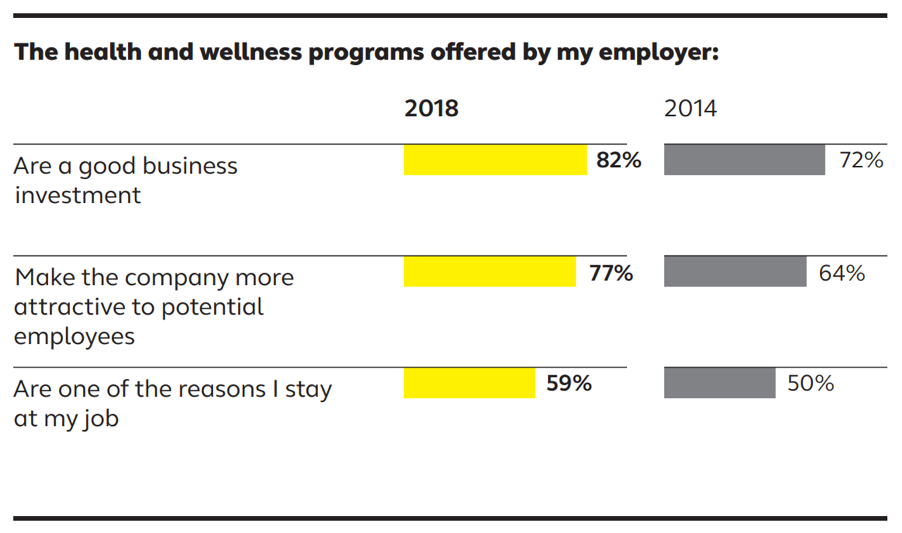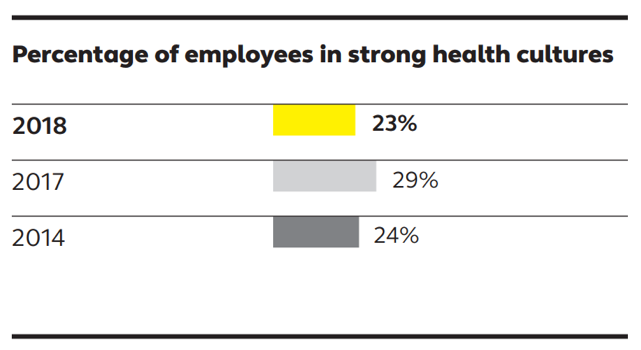Every year, the Consumer Health Mindset Study explores new and emerging topics related to the health mindset of consumers to help employers create effective benefits strategies. Part of the analysis revisits topics from previous years to identify trends (or lack thereof) with consumers. In 2018, the study reviewed several topics, including revisiting how employees perceive employer wellness programs. Over the course of four years (since 2014), perceptions of employee wellness programs significantly improved. Specifically, there were nearly 10 percentage point increases in three major areas, including whether employees felt wellness programs are good for business, attractive for potential employees, and one of the reasons they stayed with the employer.

The study did not explore the root cause of improving perception, but one likely hypothesis is that employers are slowly but surely replacing programs that have wellness done to employees with programs that have wellness done for employees. This includes cessation of wasteful biometrics screenings and uninformed health risk assessments (HRAs). This transition is due to primarily for financial reasons (screenings and HRAs fail to reduce medical expenses), but the impact of a tightening labor market cannot be ignored. As competition for the best employees increases, leading companies are investing in programs that employees want, and as a result, the perception of wellness programs as a whole is improving.
Despite the positive perception, most employees do not feel that they work in a strong culture of health. The study found that the percentage of employees in strong health cultures declined by six percentage points to 23% in 2018. The disconnect between employers and employees creates significant opportunities for companies to differentiate themselves to existing and prospective employees to improve and lower costs in retention and recruitment.

To help employers looking to distinguish themselves from the competition, the study also explored the importance of broad wellbeing dimensions to consumers. Mental, physical, and financial wellness were all similarly important to consumers, although importance varied by generation. Financial wellness increased the most in terms of importance, from 71% in 2016 to 79% in 2018. Based on the findings, employers should invest in a broad-based wellness strategy that covers multiple facets of health. The strategy will also help with engagement as certain areas of wellness may appeal more to some than others.
The 2,509 consumers who completed this year’s survey are representative of the U.S. population: 23 to 65 years old across demographics, employer size, types of health plans, and health conditions.












